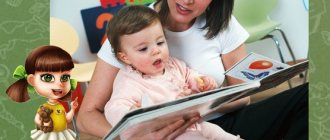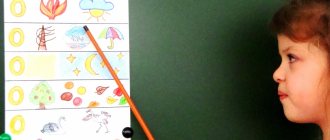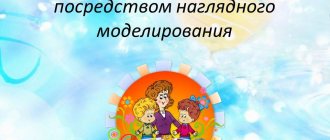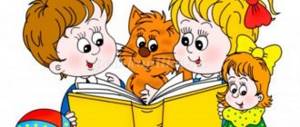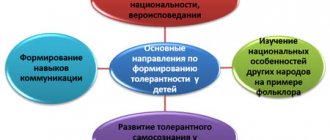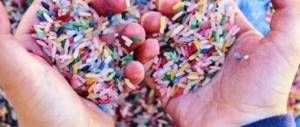This presentation “Using gaming techniques for the development of coherent speech in preschoolers” will be useful and interesting for speech therapists, educators and just mothers.
The success of the educational process largely depends on the teaching methods used. In didactics, several groups of methods can be distinguished. These are visual, verbal and practical.
Reception is an element of the method. The main role of gaming techniques is that they play the role of a motive that encourages high-quality completion of a task. When developing gaming techniques, it is necessary to take into account the level of development of play of children of a given age group.
Play is not only pleasure and joy for a child, which in itself is very important, but with its help you can develop the child’s attention, memory, thinking, and imagination. While playing, a child can acquire new knowledge, skills, abilities, and develop abilities, sometimes without realizing it. Properly selected gaming techniques not only involve children in the learning process, but also teach the child to look for a way out of problematic situations and express their point of view. For example: “What will happen? If you had a magic carpet; a magic wand... If all the trees, all the buttons disappear on earth..." In our work we use various types of gaming techniques.
The author suggests getting acquainted with some of them using the example of a lesson about a fox. For younger and middle-aged children it is simply a riddle and the answer appears on the screen. For older children, this is a descriptive riddle: red-haired, dexterous, fluffy, cunning... The familiar game “Odd Four” will not only help to consolidate general concepts, but also gives the child the opportunity for creativity. The extra picture can be not only a horse, since it has no cub, but also a bear, since it is brown, and the rest are red.
How children have learned the image of a fox in Russian fairy tales can be checked using a questionnaire. This is a completely new type of work for children. The usual questionnaire for an adult is not suitable here, so the author offers a version of a children’s questionnaire “with drawings”. Introducing the character traits of foxes in fairy tales, I did a lot of vocabulary work and worked on the syllabic structure of words.
The presentation contains illustrations from fairy tales and riddles. The children were asked to guess which fairy tale they were from. This material can be used for a quiz.
I would like to dwell on the fairy tale “Tails”. When we got acquainted with this fairy tale, we cut out and glued the tails of the animals, and also tried them on ourselves, acting out this fairy tale. We previously worked on possessive adjectives using the lotto “Where is whose tail?”
At almost every lesson we ask the children to color something, complete a drawing, or trace something on a stencil. At the same time, we very often decide for children what color should be. I placed the palette near the fox, since a fox can be not only red, as we are used to seeing it, but also brown. Children love their drawings very much and are proud of them. Children's drawings can be used to compose pictures, questionnaires, and then stories.
The game “Count the Little Foxes” will help to consolidate the agreement of numerals with nouns in gender, number, and case. Using correctly selected pictures, you can easily create a descriptive story about a fox. (The full lesson can be downloaded on the website: “Planet Childhood. Corrective work. Compiling a descriptive story “Fox”. My colleague and I developed a full-fledged lesson using many game techniques.)
Thus, summing up the above, we can conclude that the use of visual and game techniques facilitates the assimilation of material, makes the formation of speech skills more specific, accessible and conscious.
Formation of coherent speech in preschool children
The formation of language skills is carried out in games, conversations, and specially organized situations. Adults create conditions for successful interaction. Preschoolers with ODD, in addition to regular classes, work with a speech therapist.
Speech development of preschool children according to the picture
Paintings develop observational and creative abilities. Kids willingly share their impressions. You need to start with well-known objects, gradually moving on to plot paintings.
The following recommendations must be followed:
- the picture should not distort reality;
- the content must be appropriate for the age of the pupils;
- viewing continues as long as children are interested;
- the image should be well lit, exposed against the light;
- use a pointer during the story.
Important! A series of pictures united by one plot helps to tell a story. To avoid using handouts, educators can use presentations made up of story pictures.
GCD on sound culture of speech in the preparatory group
Pupils should have access to teaching materials: albums, boxes with pictures on the topic of the week.
Formation of coherent speech through inventing and imagining
Preschoolers enjoy listening to fairy tales. What if you try to come up with a fairy tale story yourself? This technique helps to realize three roles: author, narrator and listener. The term fairytale therapy appeared in pedagogy. By inventing a fairy tale, the child gets rid of fears and increases self-esteem.
The game “Fairy Tale with a Continuation” involves the continuation of already known fairy tales. Adding theatrical elements will make the game more interesting and emotional.
Using a finger theater for “A Fairy Tale with a Continuation”
In the preparatory group, verbal fantasy based on musical composition is used. Children sometimes just dream to the music and talk about the associations that have arisen. Children's imagination knows no bounds.
Teaching preschoolers retelling
Ready-made works intended for retelling in kindergarten act as model texts. There is already a plot, composition, and linguistic means invented by the author. Even taking this into account, retelling begins to be taught after the age of five. Texts must meet the following requirements:
- accessibility of content;
- clear composition;
- simple language;
- small volume.
At the first lessons they offer to retell familiar fairy tales, and a little later they move on to unfamiliar texts. The teacher helps children in cases of difficulty. Joint retelling is widely used at this stage.
Important! The storyline of a work can be restored through the use of mnemonic tables. Gradually, a card index of the works I read accumulates. Children can use it in role-playing games.
The influence of text retelling on the development of coherent speech
Presentation of a listened text is the best tool in the development of connected speech in preschoolers. By retelling the work, they learn how to construct sentences and learn the logic of the statement. They use the author's vocabulary and try to replace a number of words and expressions with synonyms.
During the retelling, pronunciation is improved, familiarity with the expressive means of language, and the intonation of sentences occurs. The development of the ability to express one’s thoughts determines the success of schooling and influences socialization.
Speech development games
Playing is the most favorite activity of preschoolers. By playing, they better master various skills.
"Imagine that you..."
Games include thematic communication in pairs.
Progress of the game:
- Two participants are selected by counting.
- The presenter assigns roles using the phrase: “Imagine that you are a seller,” “Imagine that you are a buyer.”
- A dialogue must take place between the two actors.
"What's first, what's next"
The game promotes the ability to compose a short story, following the sequence of actions. At the stage of getting to know the game, it is carried out using pictures. When children learn the rules, you can abandon the pictures.
Progress of the game:
- Option 1. Children are shown pictures depicting 2 - 3 actions. The child must compose a story, correctly arranging the sequence of actions.
- Option 2. The presenter lists the actions performed by the hero and makes an error in the sequence. Children must name where the mistake was made.
